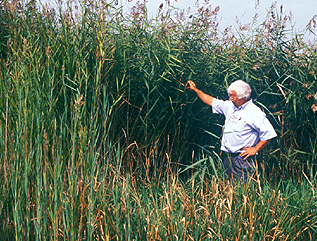Let's start at the beginning. Sending in your forage to be analyzed is very important when developing a feeding plan for any species. The values you get back tell you how the forage is lacking so that you can fill in the gaps without overfeeding nutrients that the animal won't be able to utilize.
In this post I'm going to focus on the fiber portions of forage analysis. We'll get to protein and energy later. Fiber in this sense refers to the structural portions of the plant cells. The compounds that make plant cell walls rigid. These are also the least digestible compounds in forages, thus they are important in indicating how well animals can use the nutrients in the forage.
The big three fiber categories are neutral detergent fiber (NDF), acid detergent fiber (ADF), and lignin. NDF and ADF refer to several types of fiber and the names come from how they are analyzed. The forage sample is 'washed' in a detergent solution, that solution is either of a neutral pH or an acid because of the chemicals used in each 'wash'. Each of these procedures removes a set or components from the plant material, leaving only specific fiber types. But what do they represent?
 |
| Plant cell components (image from University of Minnesota) |
The neutral detergent removes soluble carbohydrates, sugars, etc. This leaves us with only the cell wall components, lignin+cellulose+hemicellulose. NDF value is a general indicator of intake ability. As NDF increases voluntary intake generally goes down.
The ADF procedure removes hemicellulose, leaving only cellulose and lignin. It is a general indicator of digestibility. Cellulose is not digested by any mammalian enzymes, only by the microbes in the rumen of cattle and sheep or the hindgut of horses, rabbits, etc. As ADF increases digestibility goes down.
Finally lignin, which is almost completely indigestible. As lignin increases so does ADF and NDF, which means that both intake and digestibility go down.
Generally fiber can also be used a general indicators of maturity. As plant age (maturity) increases the percent lignin and cellulose go up, decreasing the quality of the forage.
That's fiber in a nutshell, what portions of nutrition do you want to hear about next?
















